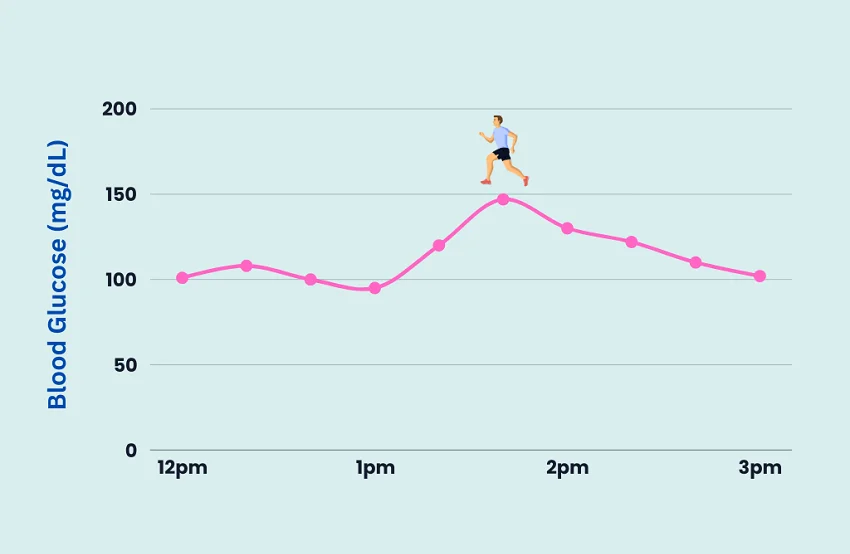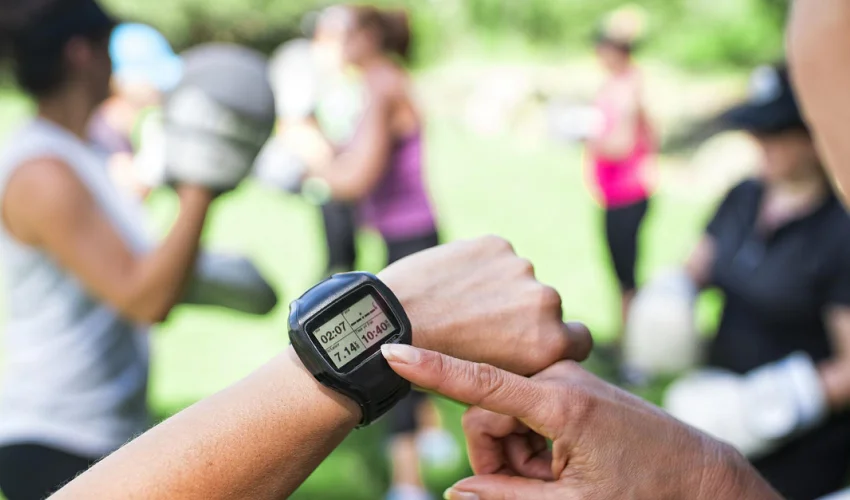Regular physical activity is extremely important for overall health. It is particularly important for those who are dealing with type 2 diabetes. Exercises and other forms of physical activities improves overall well-being, keeps you fresh and active, improves insulin effectiveness, and guards against chronic diseases that develop as a result of diabetes complications.
Generally, exercise lowers blood glucose levels in most people and helps them manage their diabetes effectively. However, it’s not uncommon for many individuals to experience a rise in blood glucose during or after physical activity, which might seem appear counterproductive.
Do not feel scared. There are ways you can take to avoid this.
Let’s first understand why you experience high rise in blood glucose after or during workouts.

Mechanism of Glucose Spikes During Exercise: Adrenaline Can Raise Blood Glucose Levels
When you engage in physical activity, your body burns glucose (sugars) for energy and improves insulin sensitivity. This usually leads to a dip in your blood glucose levels. However, certain exercises might have the opposite effect due to the body’s physiological response. Intense physical activities such as sprinting, heavy lifting, or competitive sports trigger the release of stress hormones, such as adrenaline. Adrenaline stimulates the liver to release stored glucose which causes an increase in blood glucose levels temporarily.
Dietary Impact on Blood Glucose During Exercise
The food you eat before hitting the gym can also play a significant role in how your blood glucose changes during and after the workout. Consuming a large amount of carbohydrates before exercising can cause blood glucose levels to spike, especially if the workout doesn’t utilize all the available glucose.
What You Can Do to Manage Blood Glucose During Exercise
Now that you know what causes an increase in glucose levels after exercise, you can understand and accept it when you notice a glucose change during your next workout session. You now know that some exercises can raise blood glucose levels in some individuals, and you can now accordingly plan and manage your workouts better.
It is important to note that certain levels of glucose increase is acceptable because the benefits of exercise outweigh the rise in glucose. Here are some strategies to prevent unwanted spikes in your next workout session:
- Opt for Moderate-Intensity Workouts: You should engage in moderate-intensity aerobic exercises or circuit training with light weights to prevent significant rises in blood glucose.
- Incorporate Relaxation Techniques: Techniques such as deep breathing, visualization, or meditation during or before the workout can help reduce the adrenaline effect during workouts. Take some gaps during the exercise for relaxation.
- Timing Your Workouts: If morning workouts coincide with the dawn phenomenon when your sugar levels are relatively higher — a natural increase in blood glucose early in the morning— you can consider rescheduling your exercise to later in the day such as in the evening.
- Consultation with Healthcare Providers: You can discuss Care4Sugar diabetes experts or any other healthcare provider for your workout plans to make adjustments in medication, such as rapid-acting insulin. This can help you manage glucose levels during exercises better.
- Monitoring of the glucose consistently guided by an expert care: You can enrol Care4Sugar Diabetes Plan to make expert guided experiments and close monitoring of the outcomes using a Care4Sugar CGM (Continuous Glucose Monitoring Device). This will help you understand the glucose spikes in relation to the different exercises better.
- Monitor Dietary Intake: Reduce carbohydrate intake before and during exercise and choose snacks like yogurt with nuts or peanut butter to help maintain stable glucose levels during your workout sessions.
Key Takeaways
Physical activity is generally beneficial for lowering blood glucose. it’s particularly important for those with diabetes maintain their glucose within an acceptable range for most of the time. However, you must recognize and adapt to the nuances of how different physical activities affect your glucose levels during different times of the day.
By monitoring your responses with changing physical activity patterns across different times of the day, you can try adjusting your exercise and dietary habits and enjoy the health benefits of exercise while managing your diabetes effectively. If you are still not able to manage the glucose levels and you are concerned about them, do not fear. Talk to your doctor who can adjust certain medications. But do not stop exercises as the benefits of exercise for diabetes patients and in general are more than the temporary spikes.




